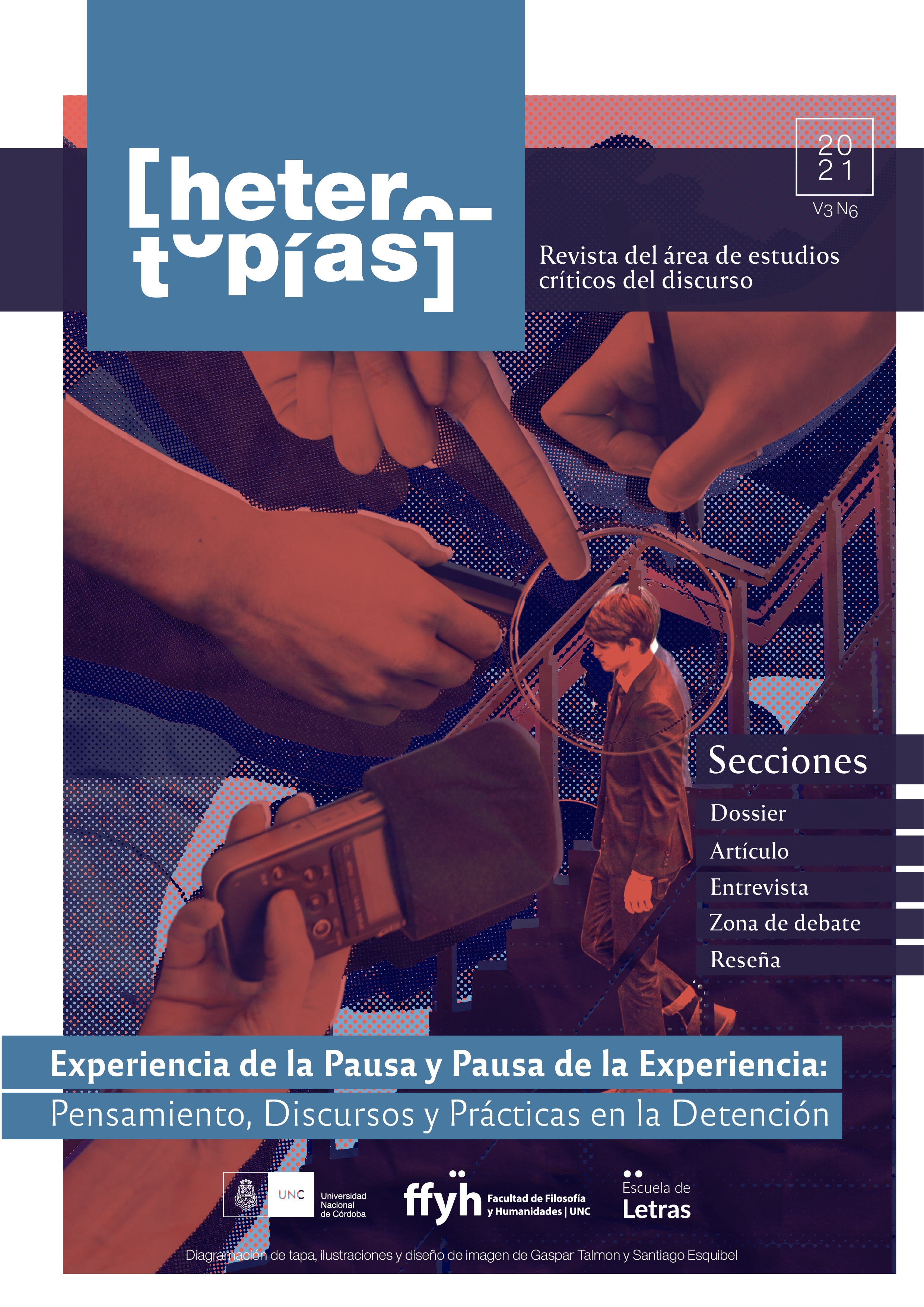Traum as an interruption in saer
Main Article Content
Abstract
Different studies focusing on the importance of perception in Juan José Saer’s literature, have underlined the recurrence of “awakening scenes” in which the narration of the passage between sleep and awakeness stresses the question around perception. In these episodes the critical function of Saer's literature is supposed to be revealed, as an exploration and problematization of the act of perceiving as well as its representation. This article analyzes the problem of perception in the Saerian narrative from the exploration of the interruptive power of imagination. We revise Hegel's considerations regarding perception and imagination, emphasizing the distinction between Schlaf and Traum, in order to propose a critical reading of three central scenes of Saer's literature. In these scenes, the act of perceiving at the moment of awakening is described in detail: the nightmare of Gato Garay and the revelation of the lifegard in Nadie nada nunca, and the scene in El limonero real in which the speech and consciousness of Wenceslao decompose under the effects of the sun. We believe that these episodes can be read as Traum scenes, following the recent contributions of Germán Prósperi regarding Traum in the Hegelian system, which is defined as suspension of dialectical breathing, the extra-time of Being, a dimension open to the Monstra, the extra-human of the human.
Downloads
Article Details

This work is licensed under a Creative Commons Attribution-NonCommercial-ShareAlike 4.0 International License.
Those authors who have publications with this journal, accept the following terms: Those authors who have publications with this journal, accept the following terms:
a. The authors will keep their copyright and guarantee to the journal the right of first publication of their work, which will be simultaneously subject to the Creative Commons Attribution - Non-Commercial - Share Alike (by-nc-sa) Attribution License; no commercial use of the original work or any derivative works is allowed, the distribution of which must be done with a license equal to the one that regulates the original work.
b. Authors may adopt other non-exclusive license agreements for the distribution of the published version of the work (e.g., deposit it in an institutional telematic archive or publish it in a monographic volume) provided that the initial publication in this journal is indicated.
c. Authors are allowed and recommended to disseminate their work through the Internet (e.g. in institutional telematic archives or on their website) before and during the submission process, which may lead to interesting exchanges and increase the number of citations of the published work. (See The effect of open access).
How to Cite
References
Arce, R. (2009). Un realismo de lo irreal: la imaginación material en la obra de Juan José Saer. Anclajes, XIII(13), pp. 9-25
Dalmaroni, M. y M. Merbilháa (2000) “Un azar convertido en don”. Juan José Saer y el relato de la percepción. En Jitrik, N. (Dir.). Historia crítica de la literatura argentina: La narración gana la partida (pp. 321-343). Buenos Aires: Emecé.
Dalmaroni, M. (2010). El largo camino del “silencio” al “consenso”. La recepción de Saer en la Argentina (1964-1987). En J. Premat (Coord.) Glosa. El entenado (edición crítico-genética) (pp.607-663). Paris-Córdoba: CRLA - Archivos, Alción Editora.
Hegel. G. W. F. (2005) [1830]. Enciclopedia de las ciencias filosóficas. Madrid: Alianza. Segunda reimpresión.
Mowad, N. (2013). Awakening to Madness and Habituation to Death in Hegel’s “Anthropology”. Stern, D. S. (Ed.). Essays on Hegel’s Philosophy of Subjective Spirit (pp. 87-105). State University of New York Press, Albany.
Oubiña, D. (2011). El silencio y sus bordes. Buenos Aires: Siglo XXI.
Prósperi, G. O. (2018). La respiración del Ser. Apnea y ensueño en la filosofía hegeliana. Buenos Aires: Miño y Dávila Editores.
Prósperi, G. O. (2019). Del Monstruo a la Idea. Aby Warburg y la psico-arqueología del hombre. Cuadernos de filosofía, 72, pp. 37-51.
Reid, J. (2013). How the Dreaming Soul Became the Feeling Soul, between the 1827 and 1830 Editions of Hegel’s Philosophy of Subjective Spirit. Empirical Psychology and the Late Enlightenment. En Stern, D. S. (Ed.). Essays on Hegel’s Philosophy of Subjective Spirit (pp. 37-54). State University of New York Press, Albany.
Ricci, P. (2006). La selva espesa del despertar. Texturas 6(6), pp. 111-127.
Saer, J. J. (1992) [1976]. La mayor. Buenos Aires, Seix Barral.
Saer, J. J. (2008) [1974]. El limonero real. 4a ed. Buenos Aires: Seix Barral.
Saer, J. J. (2012). El hombre no cultural. En Cuentos completos. (pp. 12-15) 7a ed. Buenos Aires: Seix Barral.
Saer, J. J. (2020) [1980]. Nadie nada nunca. 10a ed. Buenos Aires: Seix Barral.
Sarlo, B. (1980). Narrar la percepción. Punto de Vista 3(10), 34-37.
Walker, C. (2012). El despertar de la imagen en Juan José Saer. Notas sobre El limonero real. Badebec, 1(2), pp. 160-191.
Walker, C. (2019). El horror como forma. Villa María: Eduvim.
Wenning, M. (2013). Awakening from Madness. The Relationship between Spirit and Nature in Light of Hegel’s Account of Madness. En Stern, D. S. (Ed.). Essays on Hegel’s Philosophy of Subjective Spirit (pp. 107-119). State University of New York Press, Albany.
